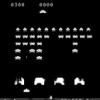Hello, coming from the world of C# - OpenTK, I have started C++ stuff and I find it very interesting.
Now I try to understand more about skeletal animation, having browsed lots of code here and there, I am still unable to understand exactly the concept of Skeletal Animation. I take the long road trying to implement one tutorial of my own from scratch.
Sidenote: I have looked at lots of code but it's very complex to understand. Instead of having a complex solution (say MD5Loader) I want to get some simple stuff going on in 2D. I use exclusively GLFW, GLEW, GLM, and OpenGL3, while others don't so that add more trouble.
QUESTION
This moment what I want to do, is to how get some bones moving around the screen? Specifically, I have looked at the concept of Hierarchical Transformations, but I can't figure out how to do them in GLM.
#include <iostream>
#include <GL/glew.h>
#include <GLFW/glfw3.h>
#include <glm/glm.hpp>
#include <glm/gtx/transform.hpp>
#include <glm/gtc/type_ptr.hpp>
#include <glm/gtc/matrix_transform.hpp>
using namespace std;
int main()
{
glm::vec3 positions[3];
positions[0] = glm::vec3(0, -2, 0);
positions[1] = glm::vec3(0, 1, 0); // Normally I would set this to 0
positions[2] = glm::vec3(0, 2, 0);
float rotations[3];
glm::mat4 bones[3];
// Setup window
int width = 800;
int height = 600;
glfwInit();
GLFWwindow* window;
window = glfwCreateWindow(width, height, "GLFW", NULL, NULL);
glfwMakeContextCurrent(window);
// Setup camera stuff
glm::mat4 matrixProj = glm::perspective(
45.0f, (float)width/height, 0.1f, 100.0f);
glm::mat4 matrixView = glm::lookAt(
glm::vec3(0, 0, 10), glm::vec3(0, 0, 0), glm::vec3(0, 1, 0));
while (!glfwWindowShouldClose(window))
{
glClear(GL_COLOR_BUFFER_BIT);
glLoadMatrixf(glm::value_ptr(matrixProj * matrixView));
float sinValue = glm::sin(glfwGetTime());
float cosValue = glm::cos(glfwGetTime());
// Normal bone positions
// bones[0] = glm::translate(positions[0]);
// bones[1] = glm::translate(positions[1]);
// bones[2] = glm::translate(positions[2]);
// Hierarchical bone transformations
// If bones[1] set to zero then it fails to translate, how to avoid this issue?
bones[0] = glm::translate(positions[0]);
bones[0] *= glm::translate(glm::vec3(sinValue, 0.0f, 0.0f)); // Add some movement
bones[1] = bones[0] * glm::translate(positions[1]);
bones[2] = bones[1] + glm::translate(positions[2]);
// Hierachical bone transformations with rotations
// how to perform rotation as well as translation?
// bones[0] = glm::translate(positions[0]);
// bones[0] *= glm::translate(glm::vec3(sinValue, 0.0f, 0.0f));
// bones[1] = glm::rotate(bones[0], (float)sinValue, glm::vec3(0,1,0))
// * glm::translate(positions[1]);
// Draw bones
glPointSize(1.0f);
glColor3f(1.0f, 1.0f, 1.0f);
glBegin(GL_LINE_STRIP);
for (int i = 0; i < 3; i++)
{
glm::mat4 bone = bones[i];
glVertex2f(bone[3][0], bone[3][1]);
}
glEnd();
// Draw joints
glPointSize(10.0f);
glColor3f(1.0f, 0.0f, 0.0f);
glBegin(GL_POINTS);
for (int i = 0; i < 3; i++)
{
glm::mat4 bone = bones[i];
glVertex2f(bone[3][0], bone[3][1]);
}
glEnd();
glfwSwapBuffers(window);
glfwPollEvents();
}
glfwDestroyWindow(window);
glfwTerminate();
return 0;
}




